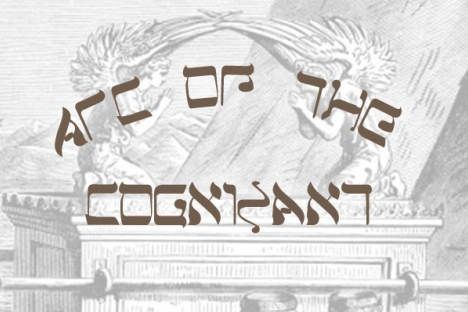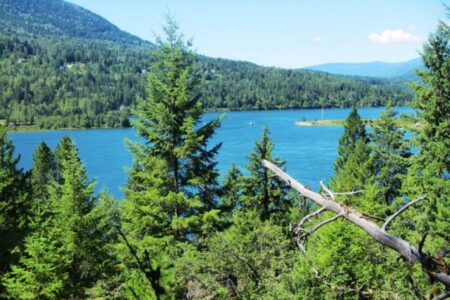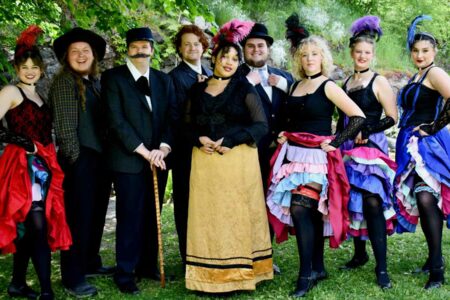A Mind in Movement Across Space and Time
“Travel broadens the mind.”
“Einstein said Time isn’t really Real.” — James Taylor, Secret of Life
A Traveller’s Chaos, A Writer’s Coherence
This month’s column is about travel, time, and identity. I have just returned from a four-week trip by car across the nation to Ontario and back. It is not the first such trip of my life; I have logged tens of thousands of miles since my first cross-continent drive in 1973, many of them by hitchhiking, some driving myself.
The subjects I touch upon in the column are many and not always clearly connected, for this writing brings together the ideas and thinking of four weeks of travel. I have divided the column, which I wrote over the Canada Day long weekend, into three instalments.
I will attach this introduction to each section.
Part One
Mind-altering Travel
The reflections and meditations stimulated and generated by this just-completed trip have surprised me, since I did not expect to be altered by the experience of just one more journey. Yet I find this travel tale has left me with a state of mind not dissimilar to the state of mind left after using certain psychotropic and psychelic drugs I tried in former years.
Effects on the traveller
It is commonplace to refer to an experience of a psychoactive drug as “a trip” – and readers who get the metaphor need no explanation. The experience has a start, a middle, an end, and an afterglow. I am still in the afterglow stage of my visit to Ontario.
I am still feeling “not quite myself” and still have a sense that my travels have altered who I am, and that I might come back into my old life at home as a personality with different ingredients. I know I’ve felt this way before, and I have witnessed how the force of past behaviours, established patterns, and the expectations of people who know me well, have inexorably drawn me back into the “old me” — against my wishes to be a new me.
Those effects of travel on my sense of personal identity are the most subtle of the consequences. Other effects are quite typical of a travel experience: I saw the country I passed through with the eyes and mind of my present self, and had some thoughts and ideas from observations I made this time and never before.
And I now have new memories of the people I was visiting and the conversations I had while I was in Ontario. I have some thoughts about my previous home province and the people I left behind.
Lastly, I have walked down memory lane in my old haunts there, where I grew into my adult self, went to schools and universities, and became the man who finally migrated to British Columbia forty years ago. The nostalgia and the reminiscences are with me still. I was 27 years old when I arrived in BC in 1978.
The land and the people
I suppose that one of my motives for driving across Canada rather than flying — so as to get a feeling of experiencing the land — was to observe my fellow Canadians in their lives; I would relate what I saw to my generalized ideas of what this country and its people mean. I have written in this column before about what Canada and Canadians signify in the world, about our culture and our politics, about how Canadian history makes us what we are.
However, I did not conduct my travelling in the way a writer would do in order to write a “state-of-the-nation” kind of article. I was, quite simply, too introverted to engage people and obtain any sort of “reading” of the land and its inhabitants.
Sure, I eavesdropped on conversations in several Tim Horton’s shops across the West and Ontario, where I stopped to plug in my laptop and catch up on email and social media. But I did the absolute minimum of socializing with strangers met on the road, and it would be foolish of me to attempt any sort of generalities about Albertans or Ontarians on the basis of my conversations.
Geography and History
I will offer only a few simple observations about the parts of Canada I saw from my car windows and from the times I stopped and went walkabout on the ground in several towns and cities on the way.
First, it is hard to miss this fact (though I have in fact missed it on previous cross-country jaunts) about our way of life as Canadians: our small cities and towns do not generally have the Trans-Canada highway or other major road artery running through their hearts. I saw repeatedly that the pattern of urban development has been dictated by commercial interest, so that in our towns the main downtown business section, so-called, must be accessed by a traveller via a detour from the highway.
Anyone who knows Cranbrook knows an excellent example of this phenomenon; one must leave Highway 3, the Crowsnest highway, to enter the downtown “core” of Cranbrook via a rather silly gateway of brick with an arch overhead and so come to Baker St. Fernie too exhibits the same pattern. All across the West and in Ontario I saw how commerce on the highway passing by a town was conducted apart from the downtown where residents do their shopping.
A strip of commercial development consistently presented the same dismal offerings of fast-food-chain restaurant franchises, donut shops, fuel stations, vehicle dealerships, and tourist-merchandise retailers. If one wants to shop as local people shop, to see the historic architecture of buildings older than a few decades, one has to turn off the highway and become, for the moment, a local driver rather than a tourist passing through.
The highway passing by a town is there for the vehicular traffic to make the fastest-possible throughfare of a built-up area; the convenience of the automobile, of the rubber-tire customer, is the determining factor. (I know this is hardly a novel observation. Residents of cities like L.A. and Houston were first to see it.)
Local application
I call this a dismal prospect, because it so clearly demonstrates the elevation of commercial calculation over the worthiness of aesthetics, social and community cohesion, and the immaterial lift-of-the-spirit one feels from living in a place with some attention to beauty raised over utilitarian values.
I live in Nelson, which has in fact a highway (3A) running through it, not around it or beside it. I am pleased that Nelson bucks the trend, though it means some heavy, long trucks going almost through the centre of town. Our main street, Baker, is not the highway, but is crossed by it at one end.
Baker St. is the uniquely-vital downtown way so beloved by tourists for its vibrancy and its lively retail and cultural offerings on the street; our commercial classes are aware how important this street is to the tourist economy, and are strong in their resistance to allowing any part of the street to be mandated as “pedestrian-only” on a permanent basis. The businessmen and -women of Baker St. demand that vehicles be able to come to the curb of their businesses, and their preference has always prevailed at city hall. The political power of this class of people once earned them the invidious label of “the Baker St. bandits.” Businesses – and of course I realize business is not a monolithic bloc –have never been lower than the top of the power-pyramid as political and economic policy-makers of Nelson; they might share their priorities with others but they never have been significantly over-ruled.
This is the world of the twenty-first century, where the market economy is god. The Chamber of Commerce is the church of business. As the businessman said to the person who complained of the ugliness of industrial odours, “Smells like money to me.”
Old World Ontario
The second observation I have about Canada’s appearance as it struck my eye on my journey is historical: southern Ontario in particular has strongly-familiar elements of urban and rural development for anyone who knows the countryside of southern England, and this is of course no accident. It was British settlers – English, Scots, Welsh, and Irish – who set their stamp on the countryside of Upper Canada and tried with notable success to replicate the land from whence they emigrated.
Villages at crossroads in England are characterized by prominent churches, a recognizable main or “high” street, and prominent public buildings such as city hall, post office, library, and law courts. Ontario towns are the same. (A Market Cross is normal for many English villages and towns, but Ontario lacks these completely, since they date from medieval centuries in England, and Ontario experienced no comparable medieval era.)
I noticed these English-countryside features in Canada as I drove myself about southern Ontario, from St. Thomas and St. Mary’s in the west through Newmarket to Peterborough and Port Hope. I suppose I knew this before but this time I was trying for some kind of novel insight; as an historian of Canadian and English colonial times, I have read the same observation from historians and cultural commentators.
Rural Ontario is pastoral, it shows evidence of farmers who value good drainage, streams and canals, trees and groves, stone or wood-rail fences, and pleasant village aesthetics. It lacks a feature of England due to a different length of settlement history: England has many public footpaths, protected by common law from the demands of private-property owners for more control of traffic, and the unique feature known as “stiles” for walkers on footpaths to get through farmers’ fences.
The English have a marvellous practice of mapping their country in Ordinance Maps, with geographic and historical details far greater than anything one can find for Ontario or anywhere in Canada. If we had as many details worthy of mapping, I would be an advocate for such Ordinance Maps, but I rather think we lack the historical depth to warrant the practice. More’s the pity, in my opinion.
This is the first instalment of the column, with two more still to come in future editions of the Rossland Telegraph.
























